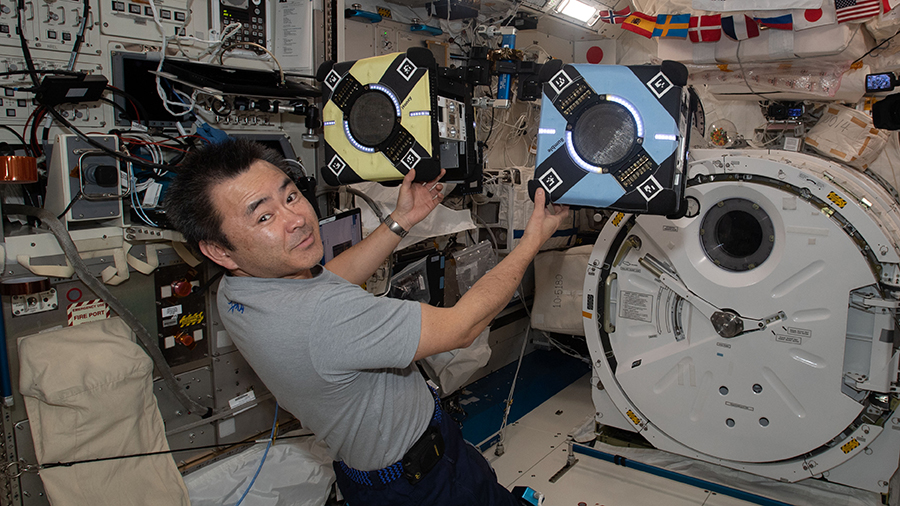Robotics and Biology Research Fill Station Crew Schedule

A variety of robotics work took place today aboard the International Space Station to teach students programming skills and ready a science module for a new robotic arm. The Expedition 65 crew also conducted vein scans, performed rodent research, and continued cleaning up after Sunday’s spacewalk.
Commander Akihiko Hoshide began Wednesday in the Japan Aerospace Exploration Agency’s (JAXA) Kibo laboratory module supporting a robotics challenge for Japanese and American students on Earth. The three-time station resident configured the toaster-sized Astrobee robotic free-flyers to perform maneuvers using programs written by the ground-based students. The event is designed to inspire the next generation of scientists and engineers to improve space-based and Earth-bound technologies.
Hoshide also had his veins scanned during the afternoon with NASA Flight Engineer Mark Vande Hei taking charge as crew medical officer. Vande Hei used an ultrasound device with real-time assistance from flight surgeons on the ground and examined the JAXA astronaut’s neck, clavicle, shoulder, and leg veins.
Russia’s Nauka multipurpose laboratory module continues to be integrated with the orbiting lab. Two spacewalks on Sept. 3 and Sept. 9 began the cable connection work to power and communicate with the new science module. Now, cosmonaut Pyotr Dubrov is configuring Nauka for operations with a new robotic arm from ESA (European Space Agency). The first-time space flyer from Roscosmos is setting up laptop computers and hardware inside Nauka that will soon control the European Robotic Arm attached to Nauka.
Rodent research is underway aboard the orbiting lab this week as mice are being observed in JAXA’s Life Science Glovebox to learn how microgravity affects normal skin and healing functions. NASA Flight Engineers Megan McArthur and Shane Kimbrough collaborated for the space biology study today monitoring the rodents then transferring and feeding them back in their habitats.
McArthur joined ESA (European Space Agency) Flight Engineer Thomas Pesquet earlier in the day stowing tools used during Sunday’s spacewalk to prepare the station for a new Roll-Out Solar Array. Pesquet also spent a portion of his day stowing an ESA incubator and deploying a microbiology experiment.
from Space Station https://ift.tt/3lngq5g
Comments
Post a Comment